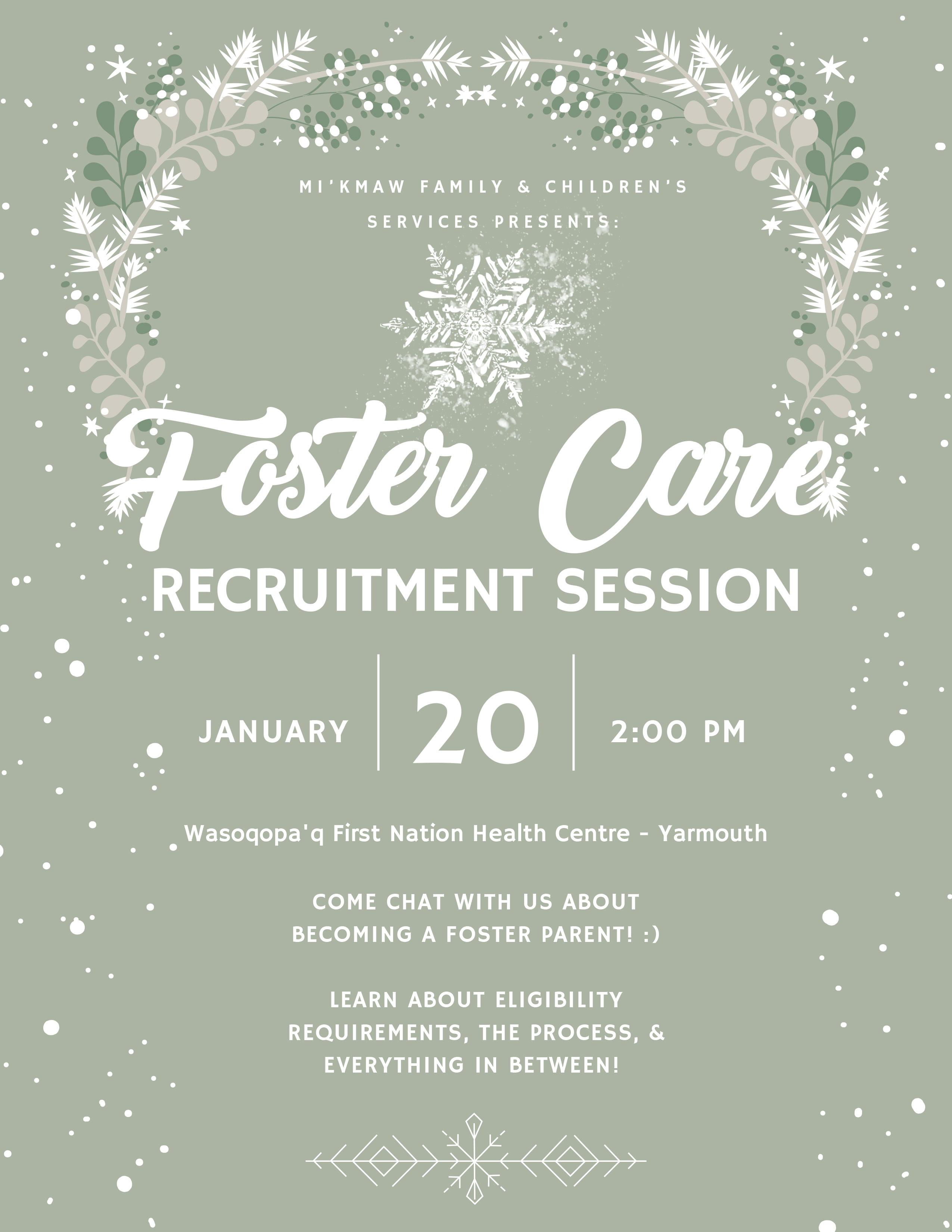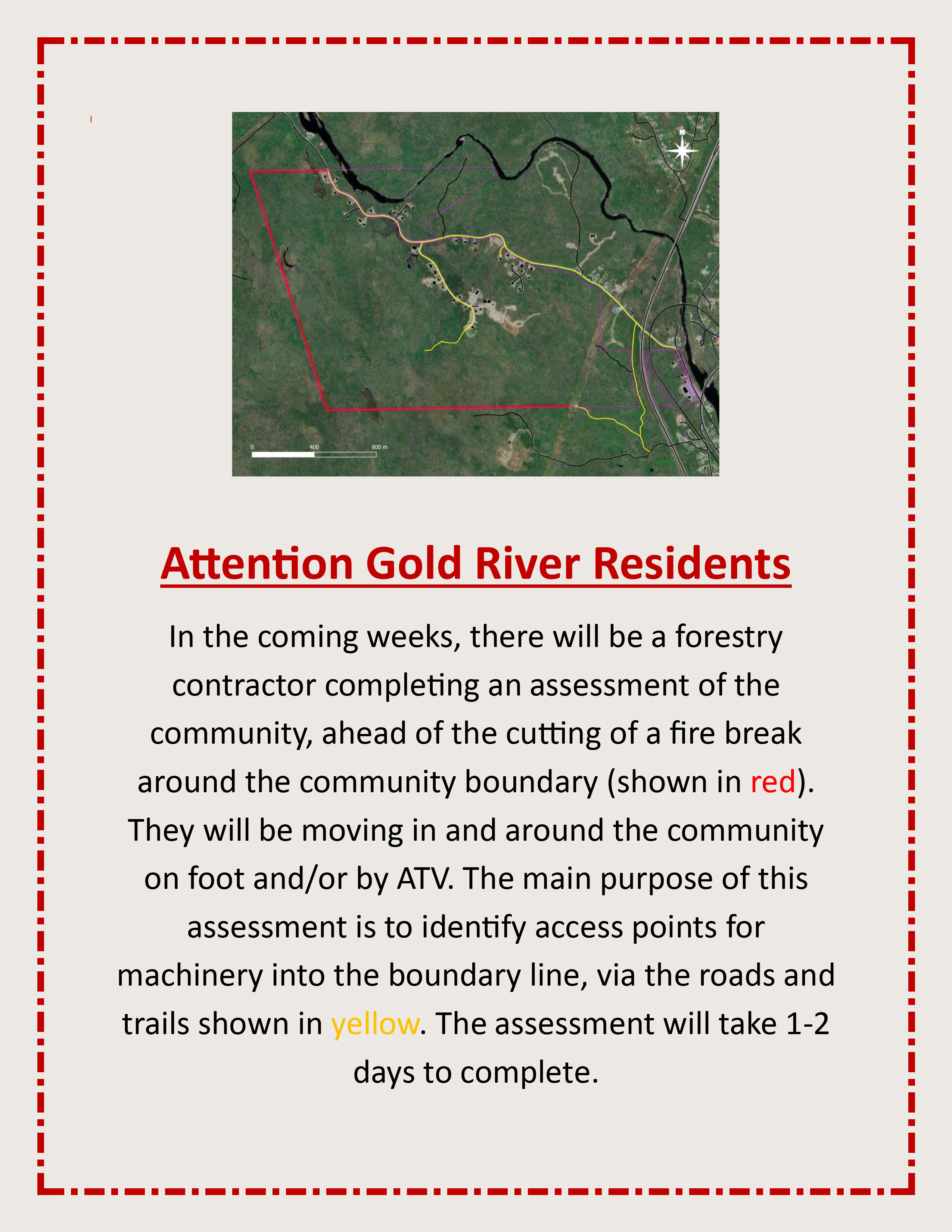News
Foster Care Recruitment Session
- Published: January 14 2025 08:28
Date: January 20, 2025 at 2:00pm
Location: Wasoqopa'q First Nation Health Center - Yarmouth
Come chat with us about becoming a foster parent and learn about eligibility requirements, the process, and everything in between!

Attention Gold River Residents - Community Assessment
- Published: December 11 2024 16:18

Staff Memo: WFN Respectful Workplace Online Training Program
- Published: December 02 2024 10:03
Wasoqopa’q First Nation has developed a Respectful Workplace Online Training Program to further support the implementation of the Respectful Workplace Employee Policy. The Program seeks to bring awareness and address discrimination, violence and harassment in WFN workplaces.
Program completion will be mandatory for all permanent full-time, part-time and or seasonal employees.
Roll out of the program will begin in January 2025.
Click Here(219 KB) to view the full memo
School Health Grant Opportunity for Youth | Ages 16 - 19
- Published: November 25 2024 14:18
We are excited to share that the Public Health Agency of Canada (PHAC) has informed us that they are now accepting applications for the School Health Grant for Youth!
Applications that meet all eligibility criteria set out in the Youth Grant Applicant Guide will be approved on a first-come first-served basis until December 20, 2024 at 11:59 AM EST, or until funds are fully expended (whichever comes first)!
If you are a Canadian student aged 16 to 19 enrolled in secondary or post-secondary school, you can apply for a $1000 grant. This grant is for creating a project that encourages healthy living, and must take place in a school-setting, aligning with health promotion goals. This grant program encourages youth to put their ideas into action while giving back to their school with a focus on one of the following priority areas: reducing substance-related harms, positive mental health and well-being, healthy eating and nutrition or physical activity.
For additional information, please visit PHAC’s School Health Grant for Youth webpage. To request an Application Form please reach out to PHAC directly via email at .
We wish you the best in your grant application process!
Housing Notice to Members
- Published: October 31 2024 21:15
October 30th, 2024
Dear Members,
We are writing to advise that Wasoqopa'q First Nation ("WFN) has recently obtained a judgement in the Supreme Court of Nova Scotia relating to a housing matter in one of our communities.
In particular, a member of WFN has been residing on properties located on the Yarmouth Reserve without authorization since 2022. The WFN Housing By-law sets out the requirements to be a lawful resident in our communities.
Click here(490 KB) to read more.
Join Us For a Walk Audit
- Published: October 09 2024 08:28

